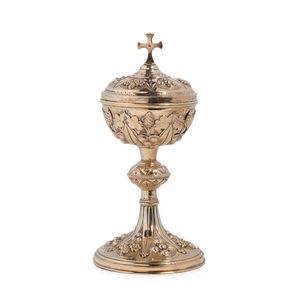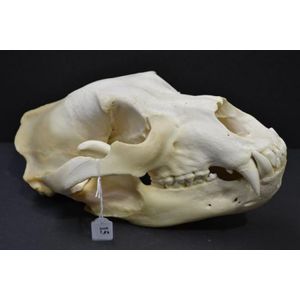Rare Gilt Bronze Neoclassical Clock by James McCabe, London
A fine and very rare gilt bronze and verde marble neoclassical George III period English clock by James McCABE of London. The case depicting cupid and a swan on a stylised chariot drawn by a stallion on a base of green marble with ormolu mounts and motifs. The movement signed 'James McCabe, London', and numbered 2133. McCabe, from a famed Irish family of watchmakers, was active in London from 1775 to 1811. He was made Honorary Freeman of the Clockmakers Company in 1781. His firm continued until 1879. His clocks are in significant collections including the British Royal collection Trust, both Horatio Nelson and George Washington owned McCabe timepieces. English circa 1805. 30.5 x 38 x 15 cm
You must be a subscriber, and be logged in to view price and dealer details.
Subscribe Now to view actual auction price for this item
When you subscribe, you have the option of setting the currency in which to display prices to $Au, $US, $NZ or Stg.
This item has been sold, and the description, image and price are for reference purposes only.
- Bronze - An alloy of copper and tin, traditionally in the proportions of about 9 parts of copper to 1 part of tin.
The discovery of bronze in Western Asia in the 4th century enabled people to create metal objects which were superior to those previoulsy possible because of its strength and hardness, and it has been used throughout the world for weapons, coins, tools, statuary and other decorative items.
It is very fluid in a molten state, and its hardness, strength when set, and non-corrosive properties makes it most suitable for casting sculpture. - Circa - A Latin term meaning 'about', often used in the antique trade to give an approximate date for the piece, usually considered to be five years on either side of the circa year. Thus, circa 1900 means the piece was made about 1900, probably between 1895 and 1905. The expression is sometimes abbreviated to c.1900.
- Movement - The technical name for the workings of a clock or watch, and does not include the dial or case.
- Ormolu - Ormolu was popular with French craftsmen in the 18th and 19th century for ornamental fittings for furniture, clocks and other decorative items. True ormolu is gilt bronze, that is bronze that has been coated with gold using a mercury amalgam. Due to the health risks associated with using mercury, this method of creating ormolu was discontinued in France in the 1830s. A substitute was developed consisting of about 75% copper and 25% zinc, however it was inferior to the bronze version. It was often lacquered to prevent it tarnishing.
- Cupid Motif - The Cupid motif, which features the Roman god of love and desire, Cupid, was a popular decorative element in classical ornamentation. Cupid was often depicted as a winged, naked baby with a bow and arrow, and was often used to symbolize love and desire.
In classical art and architecture, Cupid motifs were often used as decorative elements on furniture, such as on the legs of chairs and tables, as well as on architectural elements such as friezes and pediments. They were also used as decorative elements in frescoes, mosaics, and other forms of art.
During the Renaissance, Cupid motifs were often incorporated into the decoration of palaces, churches and other grand buildings, as they were seen as symbols of love and fertility. Cupid motifs were also commonly used in the decorative arts of the Baroque period, often appearing in the form of putti, which are small winged cherub figures.
In addition to their decorative use, Cupid motifs were also believed to hold symbolic meaning, as they were thought to evoke feelings of love, desire, and fertility. - George Iii - George III (1738 - 1820) was King of Great Britain and Ireland from 1760 to 1820.
This item has been included into following indexes:
Visually similar items

A small French silver ciborium, 19th century. 21 cm high
Sold by
in
for
You can display prices in $Au, $US, $NZ or Stg.

Sold by
in
for
You can display prices in $Au, $US, $NZ or Stg.

Mid-century tubular ceiling light yellow glass, Australia c 1960s, 103 cm high, 13 cm wide
Sold by
in
for
You can display prices in $Au, $US, $NZ or Stg.

French Louis XV style cylinder top bureau, with marquetry inlay, ormolu mounts, a drawer and cylinder type desk with pull out writing surface and various internal drawers and shelf, 83 cm wide, 53 cm deep, 103 cm high
Sold by
in
for
You can display prices in $Au, $US, $NZ or Stg.
